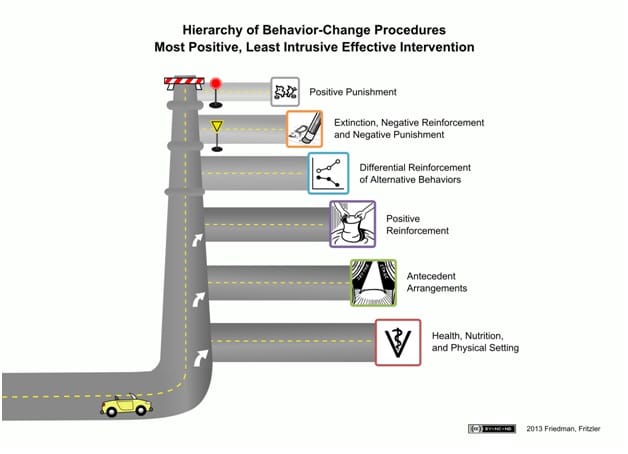Behaviour consultations are for behaviour issues that fall outside the scope of pure obedience training and that needs individual attention.
Behavioural concerns covered, range from house training to aggression and any other unwanted behaviour in between. These sessions are held at your home or in the form of virtual online sessions, and if required transferred to other environments i.e. on walks, in the car or at the vet.
Whenever an emotional association (i.e. fear, anxiety, frustration, conflict, apprehension, anger etc.) needs to be changed – a behaviour consultation is required.
Behaviour is not something ‘within’ the animal, it is fluid; it is a function of the environment, past learning, genetics and the individual dog’s internal world (i.e., emotions, mood states, physical health, developmental state). Two dogs with the same undesirable behaviour will require a different approach. I don’t subscribe to ‘behavioural recipes’ or ‘throwing spaghetti against the wall’ to see what sticks. Your dog, your circumstances and home environment is different from anybody else’s.
Therefore, before an effective behaviour change plan can be formulated specifically for you and your dog, a Functional Assessment (FA) needs to be done. The FA is compiled by filling in the Behaviour Assessment Form (that will be emailed to you) before we meet for our first session.
During our first session, which is the Assessment Session (90 minutes), there will be follow up questions about the information you submitted on the form. An assessment or hypothesis is formed, which then allows me to formulate an individual training program specific to your dog and your goals. During this session, if time permits, we will start with some foundation training in preparation for the behaviour change program.
Follow up sessions (60 minutes) will be required to implement the behaviour change program. How frequently these follow up sessions are scheduled i.e. once a week, every 10 days or every second week, is your choice. The amount of follow up sessions required, depends on many variables that can include the following i.e. your goals, your time and other resource availability, breed character of the dogs involved, predictability and severity of the behaviour, duration the behaviour has been exhibited, environmental management options available, social motivations and any other risk factors. In some (complex) cases it may take months to achieve realistic expectations – this does not however mean that you would be seeing me for months. My goal is to provide you and your dog(s) with the knowledge and skills necessary for you to continue the process independently as soon as you feel capable of doing so.
In between follow up sessions, you are encouraged ask questions and to send short videos of your training sessions, so that feedback can be provided before the next session.
As I’m also fully qualified in the visual observation of underlying pain/discomfort in dogs, you might be referred onto a Veterinary Physiotherapist for a full assessment or to you veterinarian for further diagnostics. There is a well researched bi-directional link between pain/discomfort and behaviour, and it is imperative that the physical well-being is addressed, to ensure not only the success with the implementation of the behaviour change plan, but also to improve quality of life for your dog.
No ethical behaviourist or trainer can or may offer you a guarantee or quick fix. Quick fixes or the use of aversive methods will suppress behaviour, but only temporarily, and it will pop up again at a later stage. A more in-depth explanation on this is available on the articles page – “The fall outs of using punishment”.
I, too had to work through behavioural concerns with my own (German Shepherd) dogs over the years. Some of their more complex issues were fighting with each other (which resulted in vet visits), reacting aggressively towards strangers and other dogs, separation distress, owner guarding & resource guarding. Therefore I truly understand the stress and emotional strain it can have on a household and the amount of time and effort it takes to improve problematic behaviours.
I am here to guide and support you every step of the way. And although training and behaviour modification is ‘serious business’, never forget to have fun with your dog, watch him or her learn and develop to their full potential. Enjoy the process.
During any training or behaviour change program, I am guided by the code of ethics prescribed by the organizations that I am accredited to. Below is a brief explanation:
Hierarchy of Behaviour Change and Training Procedures for Humane and Effective Practice is:
In order to comply with the Most-Positive-Least-Intrusive Practice, only steps 1. to 5.2 will be utilized.
1 Distant Antecedents: Address any health, nutritional and physical factors that might be contributing to the unwanted behaviour.
2 Immediate Antecedents: Address the setting events and motivating operations, and change/remove triggers/signals for the unwanted behaviour.
3 Positive Reinforcement: Use approaches that contingently deliver a positive consequence to increase the probability that a desirable behaviour can occur.
4 Differential Reinforcement of Alternative Behaviour/s: Teach and reinforce acceptable replacement behaviour/s and remove the reinforcement of the undesirable behaviour.
5 Negative Punishment, Extinction & Negative Reinforcement:
5.1 Negative Punishment – Contingently withdraw the positive reinforcer to reduce the probability that the undesirable behaviour will occur.
5.2 Extinction – Consistently remove the reinforcer of the unwanted behaviour to make that behaviour ineffective, inefficient and irrelevant.
5.3 Negative Reinforcement – Contingently withdraw an aversive antecedent stimulus to increase the probability that the desired behaviour will occur.
6 Positive Punishment: Contingently deliver an aversive consequence to reduce the probability that the problem behavior will occur.
,

